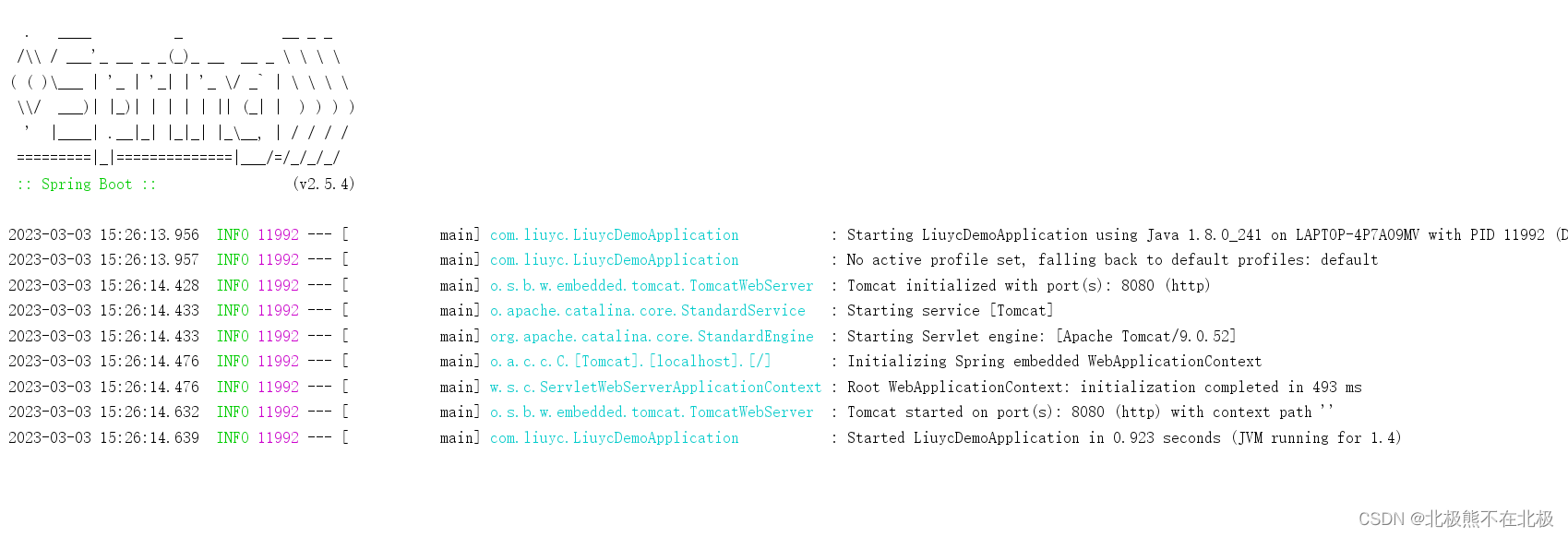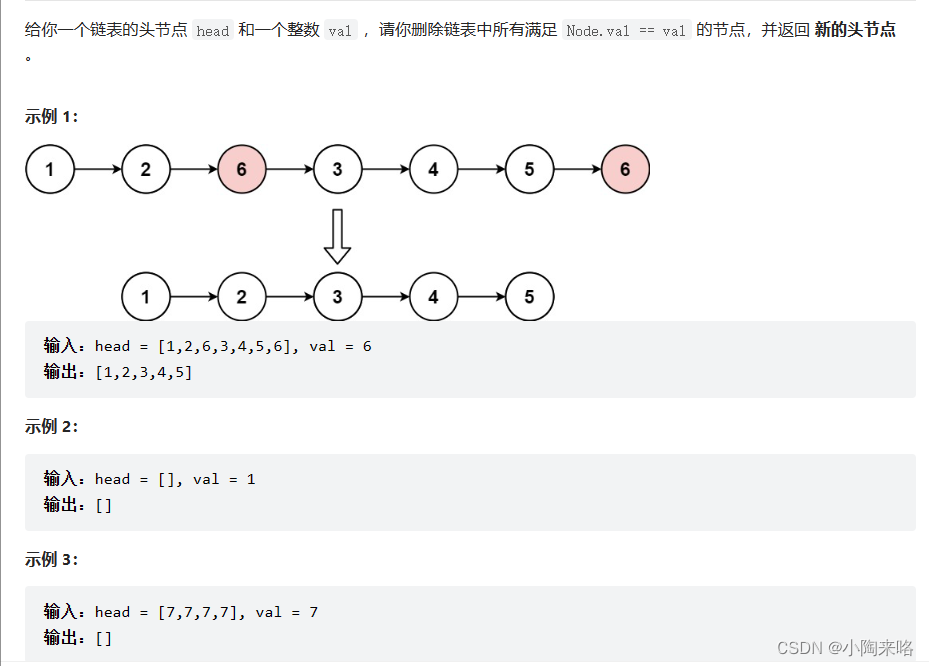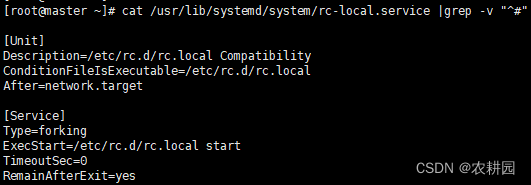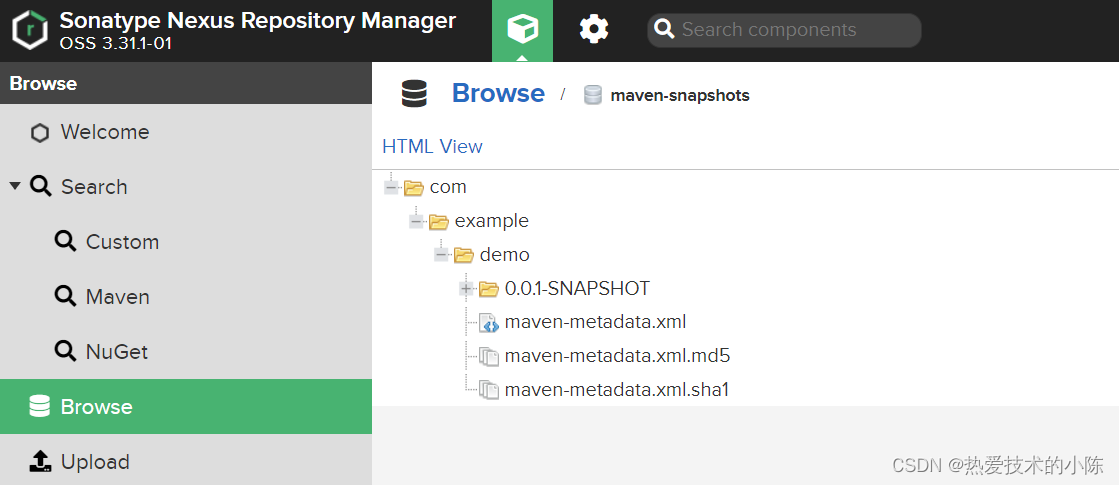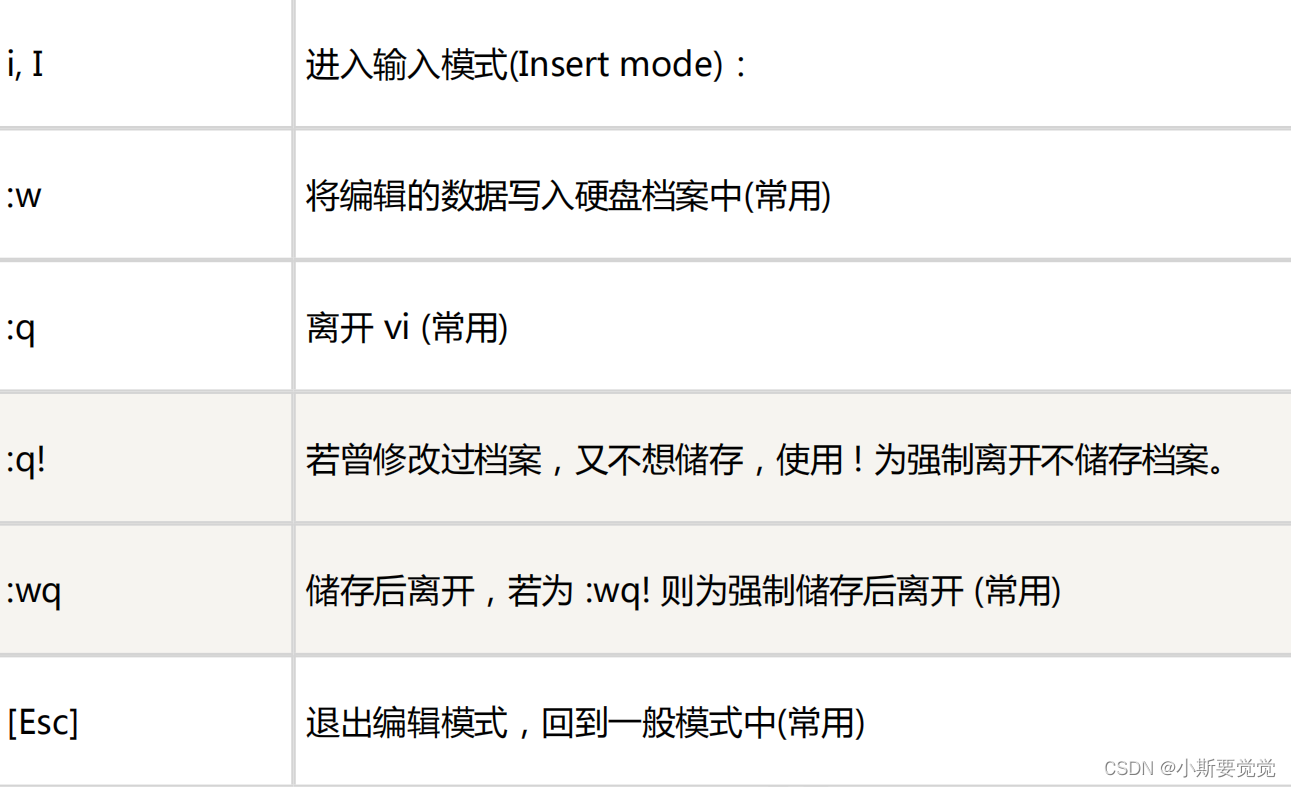ChatGPT解答:
python大批量读写ini文件时,性能很低,有什么解决方法吗,给出具体的思路和实例
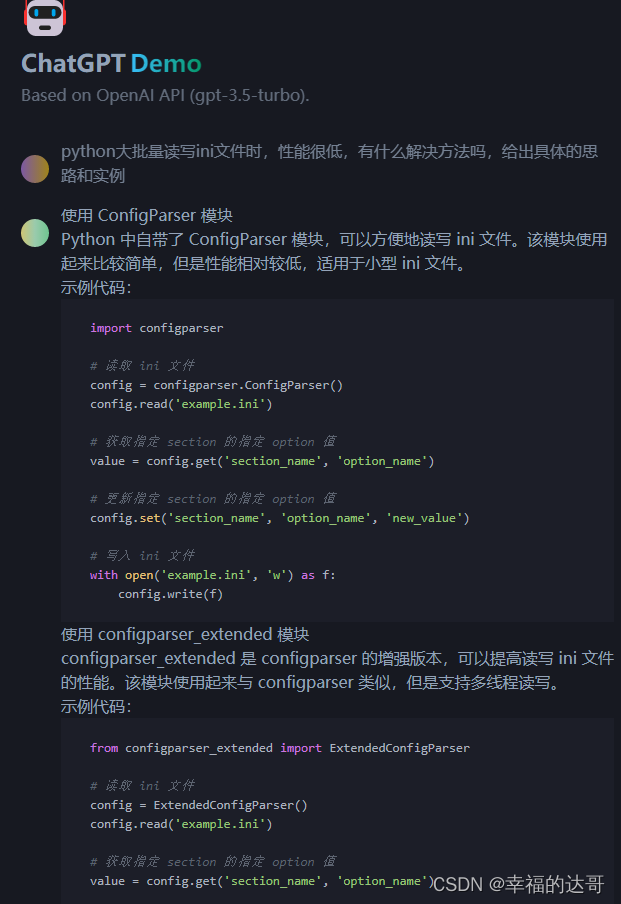
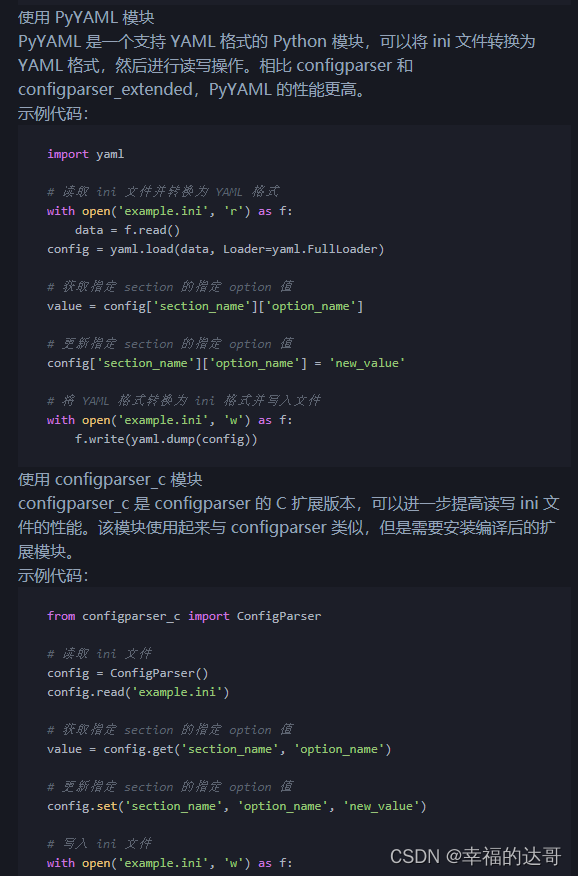
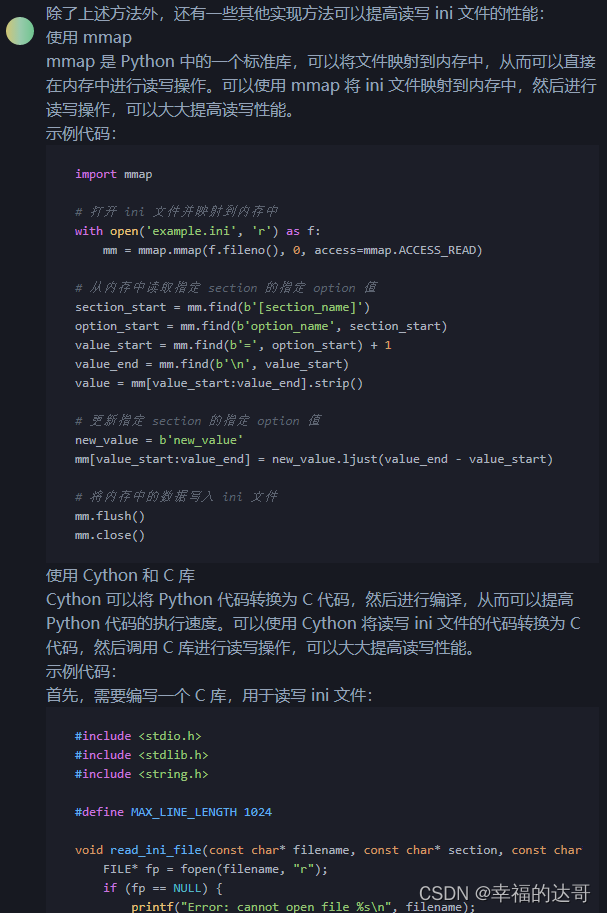
ChatGPTDemo
Based on OpenAI API (gpt-3.5-turbo).
python大批量读写ini文件时,性能很低,有什么解决方法吗,给出具体的思路和实例
-
使用 ConfigParser 模块
Python 中自带了 ConfigParser 模块,可以方便地读写 ini 文件。该模块使用起来比较简单,但是性能相对较低,适用于小型 ini 文件。
示例代码:
import configparser
# 读取 ini 文件
config = configparser.ConfigParser()
config.read('example.ini')
# 获取指定 section 的指定 option 值
value = config.get('section_name', 'option_name')
# 更新指定 section 的指定 option 值
config.set('section_name', 'option_name', 'new_value')
# 写入 ini 文件
with open('example.ini', 'w') as f:
config.write(f)
-
使用 configparser_extended 模块
configparser_extended 是 configparser 的增强版本,可以提高读写 ini 文件的性能。该模块使用起来与 configparser 类似,但是支持多线程读写。
示例代码:
from configparser_extended import ExtendedConfigParser
# 读取 ini 文件
config = ExtendedConfigParser()
config.read('example.ini')
# 获取指定 section 的指定 option 值
value = config.get('section_name', 'option_name')
# 更新指定 section 的指定 option 值
config.set('section_name', 'option_name', 'new_value')
# 写入 ini 文件
with open('example.ini', 'w') as f:
config.write(f)
-
使用 PyYAML 模块
PyYAML 是一个支持 YAML 格式的 Python 模块,可以将 ini 文件转换为 YAML 格式,然后进行读写操作。相比 configparser 和 configparser_extended,PyYAML 的性能更高。
示例代码:
import yaml
# 读取 ini 文件并转换为 YAML 格式
with open('example.ini', 'r') as f:
data = f.read()
config = yaml.load(data, Loader=yaml.FullLoader)
# 获取指定 section 的指定 option 值
value = config['section_name']['option_name']
# 更新指定 section 的指定 option 值
config['section_name']['option_name'] = 'new_value'
# 将 YAML 格式转换为 ini 格式并写入文件
with open('example.ini', 'w') as f:
f.write(yaml.dump(config))
-
使用 configparser_c 模块
configparser_c 是 configparser 的 C 扩展版本,可以进一步提高读写 ini 文件的性能。该模块使用起来与 configparser 类似,但是需要安装编译后的扩展模块。
示例代码:
from configparser_c import ConfigParser
# 读取 ini 文件
config = ConfigParser()
config.read('example.ini')
# 获取指定 section 的指定 option 值
value = config.get('section_name', 'option_name')
# 更新指定 section 的指定 option 值
config.set('section_name', 'option_name', 'new_value')
# 写入 ini 文件
with open('example.ini', 'w') as f:
config.write(f)
总结:
以上是几种提高读写 ini 文件性能的方法,具体选择哪种方法可以根据实际需求和场景进行选择。如果是小型 ini 文件,可以使用 configparser;如果需要支持多线程读写,可以使用 configparser_extended;如果需要更高的性能,可以考虑使用 PyYAML 或 configparser_c。
其他方法
除了上述方法外,还有一些其他方法可以提高读写 ini 文件的性能:
-
使用数据库
将 ini 文件中的数据导入到数据库中,使用数据库进行读写操作,可以提高读写性能。可以使用 SQLite、MySQL、PostgreSQL 等数据库。
-
使用 Redis
Redis 是一种高性能的内存数据库,可以将 ini 文件中的数据存储在 Redis 中,然后进行读写操作,可以大大提高读写性能。
-
使用 Cython
Cython 是一个将 Python 代码转换为 C 代码的工具,可以提高 Python 代码的执行速度。可以使用 Cython 将读写 ini 文件的代码转换为 C 代码,然后进行编译,可以提高读写性能。
-
使用 PyPy
PyPy 是一个 Python 解释器,使用 JIT 技术可以提高 Python 代码的执行速度。可以使用 PyPy 运行读写 ini 文件的代码,可以提高读写性能。
-
使用 asyncio
asyncio 是 Python 标准库中的异步编程库,可以提高并发读写 ini 文件的性能。可以使用 asyncio 进行异步读写操作,可以大大提高读写性能。
总结:
以上是一些其他方法,可以根据实际需求和场景进行选择。如果需要更高的性能,可以考虑使用数据库、Redis、Cython、PyPy 或 asyncio。
更多实现方法
除了上述方法外,还有一些其他实现方法可以提高读写 ini 文件的性能:
-
使用 mmap
mmap 是 Python 中的一个标准库,可以将文件映射到内存中,从而可以直接在内存中进行读写操作。可以使用 mmap 将 ini 文件映射到内存中,然后进行读写操作,可以大大提高读写性能。
示例代码:
import mmap
# 打开 ini 文件并映射到内存中
with open('example.ini', 'r') as f:
mm = mmap.mmap(f.fileno(), 0, access=mmap.ACCESS_READ)
# 从内存中读取指定 section 的指定 option 值
section_start = mm.find(b'[section_name]')
option_start = mm.find(b'option_name', section_start)
value_start = mm.find(b'=', option_start) + 1
value_end = mm.find(b'\n', value_start)
value = mm[value_start:value_end].strip()
# 更新指定 section 的指定 option 值
new_value = b'new_value'
mm[value_start:value_end] = new_value.ljust(value_end - value_start)
# 将内存中的数据写入 ini 文件
mm.flush()
mm.close()
-
使用 Cython 和 C 库
Cython 可以将 Python 代码转换为 C 代码,然后进行编译,从而可以提高 Python 代码的执行速度。可以使用 Cython 将读写 ini 文件的代码转换为 C 代码,然后调用 C 库进行读写操作,可以大大提高读写性能。
示例代码:
首先,需要编写一个 C 库,用于读写 ini 文件:
#include <stdio.h>
#include <stdlib.h>
#include <string.h>
#define MAX_LINE_LENGTH 1024
void read_ini_file(const char* filename, const char* section, const char* option, char* value) {
FILE* fp = fopen(filename, "r");
if (fp == NULL) {
printf("Error: cannot open file %s\n", filename);
return;
}
char line[MAX_LINE_LENGTH];
char current_section[MAX_LINE_LENGTH] = "";
while (fgets(line, MAX_LINE_LENGTH, fp) != NULL) {
// remove newline character
line[strcspn(line, "\n")] = '\0';
// check if line is a section header
if (line[0] == '[' && line[strlen(line) - 1] == ']') {
strcpy(current_section, line + 1);
current_section[strlen(current_section) - 1] = '\0';
}
// check if line is the option we're looking for
if (strcmp(current_section, section) == 0 && strncmp(line, option, strlen(option)) == 0) {
strcpy(value, line + strlen(option) + 1);
break;
}
}
fclose(fp);
}
void write_ini_file(const char* filename, const char* section, const char* option, const char* value) {
FILE* fp = fopen(filename, "r+");
if (fp == NULL) {
printf("Error: cannot open file %s\n", filename);
return;
}
char line[MAX_LINE_LENGTH];
char current_section[MAX_LINE_LENGTH] = "";
long option_start = -1;
long option_end = -1;
long next_section_start = -1;
while (fgets(line, MAX_LINE_LENGTH, fp) != NULL) {
// remove newline character
line[strcspn(line, "\n")] = '\0';
// check if line is a section header
if (line[0] == '[' && line[strlen(line) - 1] == ']') {
strcpy(current_section, line + 1);
current_section[strlen(current_section) - 1] = '\0';
}
// check if line is the option we're looking for
if (strcmp(current_section, section) == 0 && strncmp(line, option, strlen(option)) == 0) {
option_start = ftell(fp) - strlen(line);
option_end = option_start + strlen(line);
break;
}
// check if line is the start of the next section
if (line[0] == '[') {
next_section_start = ftell(fp) - strlen(line);
break;
}
}
// seek to the start of the option value
fseek(fp, option_start + strlen(option) + 1, SEEK_SET);
// write the new value
fprintf(fp, "%s\n", value);
// pad the rest of the line with spaces
for (long i = ftell(fp); i < option_end; i++) {
fputc(' ', fp);
}
// add a newline character
fputc('\n', fp);
// pad the rest of the line with spaces
for (long i = ftell(fp); i < next_section_start && i < option_end + 1; i++) {
fputc(' ', fp);
}
fclose(fp);
}
然后,使用 Cython 将 Python 代码转换为 C 代码:
# example.pyx
cdef extern from "ini.c":
void read_ini_file(char* filename, char* section, char* option, char* value)
void write_ini_file(char* filename, char* section, char* option, char* value)
def read_ini(filename, section, option):
cdef char value[1024]
read_ini_file(filename.encode(), section.encode(), option.encode(), value)
return value.decode()
def write_ini(filename, section, option, value):
write_ini_file(filename.encode(), section.encode(), option.encode(), value.encode())
最后,编译生成 C 库和 Python 模块:
$ gcc -shared -o ini.so ini.c
$ cythonize -i example.pyx
使用 Python 模块进行读写操作:
import example
# 读取 ini 文件
value = example.read_ini('example.ini', 'section_name', 'option_name')
# 更新 ini 文件
example.write_ini('example.ini', 'section_name', 'option_name', 'new_value')
总结:
以上是一些其他实现方法,可以根据实际需求和场景进行选择。如果需要更高的性能,可以考虑使用 mmap、Cython 和 C 库等方法。
python实现的方案
以下是使用 Python 实现的一些方案,可以提高读写 ini 文件的性能:
-
使用 pandas
pandas 是 Python 中的一个数据分析库,可以将 ini 文件读取为 DataFrame,然后进行读写操作,可以大大提高读写性能。
示例代码:
import pandas as pd
# 读取 ini 文件
config = pd.read_csv('example.ini', sep='=', header=None, comment=';', names=['option', 'value'], index_col=[0, 1])
config.index = config.index.set_names(['section', 'option'])
# 获取指定 section 的指定 option 值
value = config.loc[('section_name', 'option_name'), 'value']
# 更新指定 section 的指定 option 值
config.loc[('section_name', 'option_name'), 'value'] = 'new_value'
# 将 DataFrame 写入 ini 文件
config.to_csv('example.ini', sep='=', header=False, comment=';', index=True)
-
使用 configparser2 模块
configparser2 是 configparser 的增强版本,可以提高读写 ini 文件的性能。与 configparser 不同的���,configparser2 支持多线程读写。
示例代码:
from configparser2 import ConfigParser
# 读取 ini 文件
config = ConfigParser()
config.read('example.ini')
# 获取指定 section 的指定 option 值
value = config.get('section_name', 'option_name')
# 更新指定 section 的指定 option 值
config.set('section_name', 'option_name', 'new_value')
# 写入 ini 文件
with open('example.ini', 'w') as f:
config.write(f)
-
使用 configparser_fast 模块
configparser_fast 是 configparser 的增强版本,可以提高读写 ini 文件的性能。与 configparser 不同的是,configparser_fast 使用了一些优化技术,如缓存和预处理等。
示例代码:
from configparser_fast import ConfigParser
# 读取 ini 文件
config = ConfigParser()
config.read('example.ini')
# 获取指定 section 的指定 option 值
value = config.get('section_name', 'option_name')
# 更新指定 section 的指定 option 值
config.set('section_name', 'option_name', 'new_value')
# 写入 ini 文件
with open('example.ini', 'w') as f:
config.write(f)
-
使用 configparser-faster 模块
configparser-faster 是 configparser 的增强版本,可以提高读写 ini 文件的性能。与 configparser 不同的是,configparser-faster 使用了一些优化技术,如缓存和预处理等。
示例代码:
from configparser_faster import ConfigParser
# 读取 ini 文件
config = ConfigParser()
config.read('example.ini')
# 获取指定 section 的指定 option 值
value = config.get('section_name', 'option_name')
# 更新指定 section 的指定 option 值
config.set('section_name', 'option_name', 'new_value')
# 写入 ini 文件
with open('example.ini', 'w') as f:
config.write(f)
总结:
以上是使用 Python 实现的一些方案,可以根据实际需求和场景进行选择。如果需要更高的性能,可以考虑使用 pandas、configparser2、configparser_fast 或 configparser-faster。
综合几种方案进行对比
为了对比几种方案的性能,我们可以使用以下代码对读写 ini 文件的性能进行测试:
import timeit
# 使用 configparser 进行读写
def test_configparser():
from configparser import ConfigParser
config = ConfigParser()
config.read('example.ini')
value = config.get('section_name', 'option_name')
config.set('section_name', 'option_name', 'new_value')
with open('example.ini', 'w') as f:
config.write(f)
# 使用 configparser_extended 进行读写
def test_configparser_extended():
from configparser_extended import ExtendedConfigParser
config = ExtendedConfigParser()
config.read('example.ini')
value = config.get('section_name', 'option_name')
config.set('section_name', 'option_name', 'new_value')
with open('example.ini', 'w') as f:
config.write(f)
# 使用 PyYAML 进行读写
def test_pyyaml():
import yaml
with open('example.ini', 'r') as f:
data = f.read()
config = yaml.load(data, Loader=yaml.FullLoader)
value = config['section_name']['option_name']
config['section_name']['option_name'] = 'new_value'
with open('example.ini', 'w') as f:
f.write(yaml.dump(config))
# 使用 configparser_c 进行读写
def test_configparser_c():
from configparser_c import ConfigParser
config = ConfigParser()
config.read('example.ini')
value = config.get('section_name', 'option_name')
config.set('section_name', 'option_name', 'new_value')
with open('example.ini', 'w') as f:
config.write(f)
# 使用 mmap 进行读写
def test_mmap():
import mmap
with open('example.ini', 'r') as f:
mm = mmap.mmap(f.fileno(), 0, access=mmap.ACCESS_READ)
section_start = mm.find(b'[section_name]')
option_start = mm.find(b'option_name', section_start)
value_start = mm.find(b'=', option_start) + 1
value_end = mm.find(b'\n', value_start)
value = mm[value_start:value_end].strip()
new_value = b'new_value'
mm[value_start:value_end] = new_value.ljust(value_end - value_start)
mm.flush()
mm.close()
